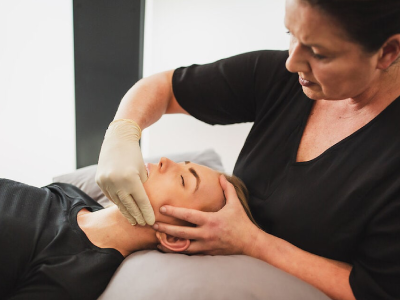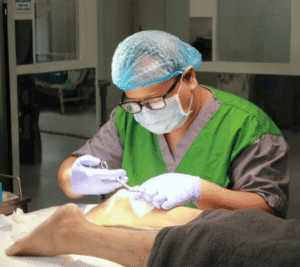Chronic jaw pain and discomfort can significantly impact everyday life, making even simple tasks such as chewing or speaking a challenge. TMJ dysfunction treatment has become an essential subject for individuals seeking relief from these often debilitating symptoms. This comprehensive guide delves into the nature of temporomandibular joint (TMJ) dysfunction, its symptoms, diagnosis, and a variety of treatment options—ranging from non-surgical remedies to more advanced interventions—while also offering preventative tips and answering frequently asked questions.
What is TMJ Dysfunction?
Temporomandibular joint (TMJ) dysfunction, commonly known as TMD, refers to a collection of disorders affecting the jaw joint and the muscles responsible for controlling jaw movement. The TMJ connects the lower jaw (mandible) to the skull (temporal bone) and plays a crucial role in movements such as speaking, chewing, and yawning. When something goes awry in this joint or the surrounding muscles, it can lead to pain, restricted movement, and a host of other issues.
There isn’t a single, definitive cause for TMJ dysfunction. Often, the condition results from a combination of factors including genetics, arthritis, jaw injuries, chronic clenching or grinding of the teeth (bruxism), and even poor posture. Moreover, the complexity of the TMJ means that symptoms of TMD can overlap with other conditions such as Trigeminal Neuralgia, salivary gland disease, or swollen lymph nodes, making accurate diagnosis all the more challenging.
Recognizing the Symptoms of TMJ Dysfunction
Understanding the symptoms of TMJ dysfunction is the first step toward seeking effective treatment. Although the condition may vary in severity from person to person, several common signs indicate that you might be suffering from TMD. Some of the most frequent symptoms include:
- Jaw Pain: Persistent pain or tenderness in the jaw, especially when chewing or talking.
- Clicking or Popping Sounds: Audible noises when opening or closing the mouth, which can be accompanied by discomfort.
- Lockjaw: A temporary inability to fully open or close the mouth due to muscle spasms.
- Headaches: Frequent headaches or migraines that may be linked to tension in the jaw muscles.
- Ear Pain or Tinnitus: Discomfort around the ears or a ringing sensation, as the joint’s proximity to the ear can sometimes cause referred pain.
- Neck and Shoulder Pain: Tension and pain may extend beyond the jaw to other parts of the upper body.
These symptoms can be mild and intermittent, or they may be severe enough to interfere with daily life. Recognizing them early can lead to more effective TMJ dysfunction treatment and better outcomes over time.
How TMJ Dysfunction is Diagnosed
Diagnosing TMJ dysfunction is a multifaceted process due to its overlapping symptoms with other medical conditions. Physicians often employ a combination of clinical examinations, patient history reviews, and imaging studies to arrive at an accurate diagnosis. Here’s how the diagnostic process typically unfolds:
- Clinical Evaluation: A thorough physical examination is conducted to assess jaw movement, muscle tenderness, and joint sounds. The healthcare provider will ask about the onset, duration, and intensity of your symptoms.
- Medical and Dental History: Since TMJ dysfunction may share similarities with other conditions, doctors will review your health history, including any previous injuries, dental problems, or other chronic conditions.
- Imaging Tests: To get a closer look at the joint and surrounding tissues, your physician may order X-rays, magnetic resonance imaging (MRI), or computed tomography (CT) scans. These images help in ruling out other conditions and in visualizing the extent of the dysfunction.
- Referral to Specialists: In some cases, patients may be referred to an otolaryngologist (ear, nose, and throat specialist) or a dentist who specializes in jaw disorders for further evaluation.
A comprehensive diagnostic approach ensures that TMJ dysfunction treatment is tailored to the specific causes and severity of your condition, reducing the risk of misdiagnosis and promoting more effective management.
Non-Surgical TMJ Dysfunction Treatment Options
Most cases of TMJ dysfunction can be effectively managed with non-surgical treatments. These conservative methods aim to alleviate pain, improve jaw function, and prevent further damage. Below are some widely recommended non-surgical treatment options:
Lifestyle Changes & Home Remedies: Simple modifications in daily habits can significantly improve TMJ dysfunction symptoms:
- Heat and Cold Therapy: Applying a warm compress can help relax tense muscles, while a cold pack can reduce inflammation and numb the pain.
- Stress Management: Since stress often contributes to jaw clenching and muscle tension, techniques such as yoga, meditation, or deep-breathing exercises can be beneficial.
- Dietary Adjustments: Eating softer foods and avoiding chewy, hard, or sticky foods reduces the strain on the jaw, allowing it to rest and heal.
Physical Therapy & Jaw Exercises: Targeted physical therapy can enhance the strength and flexibility of the jaw muscles. A licensed physical therapist may guide you through exercises designed to:
- Improve Jaw Mobility: Gentle stretching and controlled movements help restore a normal range of motion.
- Strengthen Surrounding Muscles: Strengthening exercises can improve support around the TMJ, reducing strain during daily activities.
- Correct Posture: Proper alignment of the head and neck is essential, as poor posture can exacerbate TMJ symptoms.
Medications & Pain Management: Various medications can help manage the pain and inflammation associated with TMJ dysfunction:
- Over-the-Counter Pain Relievers: Nonsteroidal anti-inflammatory drugs (NSAIDs) like ibuprofen or naproxen can reduce inflammation and relieve pain.
- Muscle Relaxants: These medications help reduce muscle spasms that often contribute to jaw discomfort.
- Anti-Inflammatory Drugs: In cases of significant inflammation, a short course of corticosteroids may be prescribed by your doctor.
Dental Treatments: Dentists play a critical role in the non-surgical management of TMJ dysfunction. Some common dental interventions include:
- Mouthguards and Splints: Custom-fitted devices can prevent teeth grinding (bruxism) during sleep and reduce the strain on the TMJ.
- Orthodontic Treatments: For individuals with misaligned teeth, orthodontic adjustments can help distribute the bite more evenly and reduce stress on the jaw joint.
- Occlusal Adjustments: Sometimes, minor modifications to the bite can help in alleviating TMJ dysfunction symptoms by improving the alignment between the upper and lower jaws.
Each of these approaches is designed to offer relief without resorting to invasive procedures, making them an ideal starting point for TMJ dysfunction treatment.
When Is Surgery Needed?
While most TMJ dysfunction cases are successfully managed through conservative treatments, some severe or persistent cases may require surgical intervention. Surgery is generally considered a last resort when non-surgical treatments fail to provide sufficient relief. Here are some of the surgical options available:
- Arthrocentesis: A minimally invasive procedure where the joint is flushed with fluid to remove inflammatory debris and relieve pain.
- TMJ Arthroscopy: This technique involves inserting a small camera and surgical instruments into the joint to diagnose and treat internal issues.
- Open-Joint Surgery: In more extreme cases, open-joint surgery may be performed to repair or replace the damaged joint structures.
Each surgical procedure carries its own risks and recovery times, so it is important to discuss all available options with your healthcare provider before proceeding. Surgery is generally reserved for cases where the joint’s structure has been significantly compromised or when chronic pain persists despite extensive non-surgical management.
Preventing TMJ Dysfunction
Prevention is always better than cure. Implementing preventive measures can help reduce the risk of developing TMJ dysfunction or prevent the recurrence of symptoms. Consider the following strategies:
- Maintain Good Posture: Keeping your head, neck, and shoulders properly aligned can reduce unnecessary strain on the jaw muscles.
- Avoid Excessive Jaw Strain: Refrain from habits such as chewing gum excessively, biting your nails, or clenching your teeth.
- Regular Dental Checkups: Routine visits to your dentist can help identify early signs of TMJ dysfunction and ensure that any dental issues that might contribute to the condition are addressed promptly.
- Stress Management Techniques: Incorporating relaxation methods into your daily routine can reduce the incidence of stress-induced jaw clenching.
- Mindful Eating: Opt for softer foods when experiencing jaw discomfort and gradually reintroduce harder foods as symptoms improve.
These preventive practices not only support long-term TMJ dysfunction treatment but also contribute to overall oral and physical health.
Takeaway
TMJ dysfunction treatment offers a wide range of options designed to alleviate pain, improve jaw function, and enhance quality of life. From lifestyle modifications and physical therapy to medications and, in some cases, surgical intervention, the key to effective management lies in a personalized approach that considers the unique causes and symptoms of each patient. Recognizing the signs early and seeking appropriate professional help can make all the difference in preventing long-term complications.
Taking a proactive approach—whether through regular dental checkups, stress management techniques, or targeted exercises—can help ensure that you maintain not only a healthy jaw but overall well-being. If you experience persistent symptoms or if conservative measures do not bring the desired relief, it is essential to consult with a healthcare provider who specializes in jaw disorders to explore more advanced TMJ dysfunction treatment options.
Ultimately, effective management of TMJ dysfunction is achievable, and understanding your treatment options can empower you to take control of your health. With the right combination of therapies and preventive measures, relief from jaw pain is within reach, allowing you to enjoy life without the constant burden of discomfort.
Remember, every case of TMJ dysfunction is unique. A thorough evaluation by medical and dental professionals is critical in developing a treatment plan that meets your specific needs. If you’re struggling with ongoing jaw pain or other related symptoms, don’t hesitate to seek help—early intervention is key to long-term success in TMJ dysfunction treatment.






